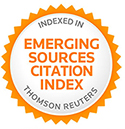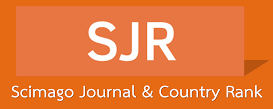Aplicación de teledetección y SIG para el levantamiento cartográfico de los suelos de la cuenca Solani, India.
Resumen
La planificación del suelo necesita ser orientada con base en la cartografía del área de interés. Se realizó el análisis fisiográfico para la delineación de las unidades cartográficas de suelo (UCS) de la cuenca Solani, región Uttarakhand-India, a través de la teledetección y los sistemas de información geográfico (SIG). Se aplicó la Clasificación Supervisada, NDVI, PCA, Realce de Contraste y Soil Brightness Index sobre imágenes LANDSAT TM, IRS-P6 LISS-III. Se obtuvieron las características pedológicas a través de un chequeo de campo de las UC ya delineadas y ajustadas con la observación de campo. En función a la fisiografía, vegetación e información edafológica, se identificaron las regiones de montañas de Siwalik, colinas residuales, piedemonte y planicies aluviales, así como 21 UC. Los suelos fueron clasificados como Entisoles e Inseptisoles, principalmente los Typic Haplusteps. La teledetección y los SIG permitieron sistematizar con mayor eficiencia la caracterización de los suelos de la cuenca.
Palabras clave
Texto completo:
PDFReferencias
ESHEL, G.; LEVY, G. & M. SINGER. 2004. Spectral Reflectance Properties of Crusted Soils under Solar Illumination. Soil Science Society of American Journal.68: 1.982-1.991.
HILWING, F. & R. KARALE. 1973. Physiographic system and elements of photo-interpretation as applied to Soil Survey in Ganges Plain. Journal of the Indian Society of Remote Sensing, 21: 205-212.
JESTER, W. & A. KLIK. 2005. Soil surface roughness measurement – methods, applicability, and surface representation. Catena. 64: 174-192.
LAGACHERIE, P.; BARET, F.; FERET, J.; MADEIRA, J. & J. ROBBEZ. 2008. Estimation of soil clay and calcium carbonate using laboratory, field and airborne hiperespectral measurements. Remote Sensing of Environment. 112 (3): 825–835.
LILLESAND, T.; KIEFER, R. & J. CHIPMAN. 2007. Remote Sensing and Image Interpretation. Wiley India Edition. New Delhi-India 763 p.
MELÉNDEZ, I.; NAVARRO, J.; GOMEZ, I. & M. KOCH. 2008. Identifying optimal spectral bands to assess soil properties with VNIR
radiometry in semi-arid soils. Geoderma. 147: 126-132.
MOUAZEN, A.; KAROUI, R.; DE BAERDEMAEKER, J. & H. RAMON. 2006. Characterization of Soil Water Content Using Measured Visible and Near Infrared Spectra. Soil Science Society American Journal. 70: 1.295-1.302.
SANTRA, P.; SAHOO, R.; DAS, B.; SAMAL, R.;
PATTANAIK, A. & V. GUPTA. 2009. Estimation of soil hydraulic properties using proximal spectral reflectance in visible, near-infrared, and shortwave-infrared (VIS–NIR–SWIR) region. Geoderma. 152: 338-349.
SELLITTO, V.; FERNÁNDEZ, R.; BARRÓN, V. & C. COLOMBO. 2009. Comparing two different spectroscopic techniques for the characterization of soil iron oxides: Diffuse versus bi-directional reflectance. Geoderma.
: 2–9.
STEVENS, A.; UDELHOVEN, T.; DENIS, A.;
TYCHON, B.; LIOY, R.; HOFFMANN, L. & B. WESEMAEL. 2010. Measuring soil organic carbon in croplands at regional scale using airborne imaging spectroscopy. Geoderma. 158: 32-45.
SOIL SURVEY DIVISION STAFF. 1993. Soil survey manual. Soil Conservation Service. U.S. Department of Agriculture Handbook
SOIL SURVEY STAFF. 2006. Soil Taxonomy. Tenth Edition. Dept. Agric. Soil Consv.Serv. Agriculture Handbook, 332 p.
VASQUES, G.; GRUNWALD, S. & J. SICKMAN. 2008. Comparison of multivariate methods for inferential modelling of soil carbon
using visible/near-infrared spectra. Geoderma. 146: 14-25.
VISCARRA, R.; WALVOORT, D.; MC BRATNEY, A.; JANIK, L. & J. SKJEMSTAD. 2006. Visible near infrared, mid infrared or combined diffuse reflectance spectroscopy for simultaneous assessment of various
soil properties. Geoderma. 131: 59-75.
XIANBIN, L.; XIUMEI, L.; XINGGU Z. & LONG Y. 2007. Application of Satellite Remote Sensing data in an Investigation of land
along a freeway. Data Science Journal,(6): 548-552.
Enlaces refback
- No hay ningún enlace refback.
DOI: https://doi.org/10.53766/RGV
La Revista Geográfica Venezolana se encuentra actualmente indizada en:
 |  |  | |
 |  |  |  |
 |  |  |  |
![]()
Todos los documentos publicados en esta revista se distribuyen bajo una
Licencia Creative Commons Atribución -No Comercial- Compartir Igual 4.0 Internacional.
Por lo que el envío, procesamiento y publicación de artículos en la revista es totalmente gratuito.
